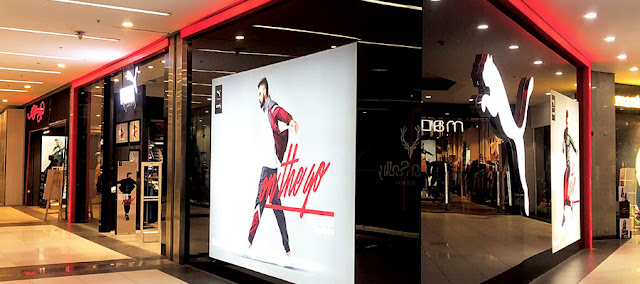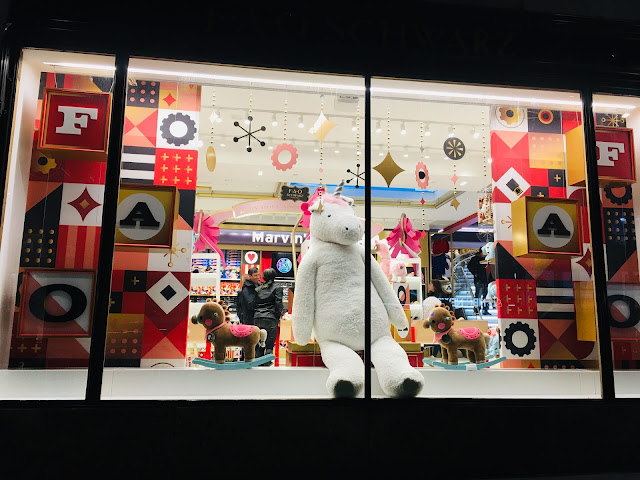Store branding Guide: Retail Store Branding Ideas
What do you think of when you hear "retail store branding"? Do you think about the color scheme, logo, and font that makes up your favorite clothing brand? Or it's how your favorite coffee shop uses its space to create a welcoming atmosphere. These are all examples of retail store branding. The most successful brands create a strong identity that resonates with customers and stands out on shelves. In this guide, we'll cover everything from making an effective brand strategy to designing your own packaging and merchandise displays.
The Elements of Store Branding
Store branding is the process of developing a brand for your retail store. Developing a store brand can be an important part of the overall customer experience and help you attract new customers, particularly those likelier to buy from you because they trust you or like how you do business.
Shop branding includes things such as:
- Logo - A logo is often the most recognizable element of any company's identity, so it should incorporate elements from all other aspects of your brand (especially colors).
- Color Scheme - Colors evoke feelings in people, so choose colors that will represent what type of experience customers want when visiting your location! Use one main color with accents instead of many shades; this makes it easier for both parties involved since fewer changes are needed over time when updating signage/decorations, etcetera.
What Is a Retail Store?
A retail store is a physical location where customers can buy products. Retail stores are usually part of a chain of stores and sell products that other companies make or may also sell products that the retailer makes.
How to Start Your Retail Store
- Know what you want to sell.
- Know where you want to sell it. This can be an online store, a brick-and-mortar store, or both!
- Figure out how you will sell the product (e.g., eBay listing templates) and if there are any fees associated with this method of selling (e.g., eBay fees).
- Estimate how much it will cost for each item in your inventory, including shipping fees from suppliers/manufacturers if applicable.
How to Create a Brand for Your Retail Store
Branding is important, but what does it mean? Branding is a promise. It's how you communicate your business story and engage with customers to create an experience that will make them want to return.
A brand is more than just a logo--it's how you present yourself to the world. When people think about your brand, they expect certain things from it:
- Quality products/services.
- Consistency in quality.
- Reliability.
- High standards of customer service.
- Trustworthiness (that you'll do what you say).
Naming Your Retail Store
Your retail store name will be one of the most important aspects of your brand. People will remember you by it, and it has to stand out in a crowd.
Here are some tips for naming your retail store:
- Use a name that is easy to remember (and spell). They will only return if someone can remember or spell it!
- Keep it short and simple--avoid using numbers or hyphens if possible; these can confuse customers when trying to navigate their shopping experience at your location. Also, avoid negative words like "No" or "Avoid," as well as acronyms unless they're already familiar with them from other brands' names (like Starbucks). Finally, refrain from using trademarks from other companies' names--this could get messy if things go wrong between our two businesses!
Logo Design for a Retail Store
When designing a logo for your retail store, there are several things to keep in mind:
- The logo should be simple, clear, and memorable. It should also be easy to read from a distance - either printed or online -- so that customers can find it quickly when needed.
- The design must work well in black and white (for printing) and color (for marketing materials). You'll need both versions of your logo saved separately to be ready whenever needed!
- Your store's unique name could easily be mispronounced by customers who don't speak English as their first language -- especially if they are young children shopping with their parents at your location during summer vacation periods like Memorial Day weekend sales events held annually around June 1st each year throughout America's Midwest region since 1976."
Color Schemes and Palettes for a Retail Store
A color palette is a group of colors that work well together. A color wheel is a tool used to create a color palette, which can help you create a cohesive brand for your retail store.
The most basic way to use the color wheel is as follows:
- Choose one primary color (the dominant hue in your design) and one secondary color (an accent hue). These two will provide you with most of the hues needed for your design, but there will still be some gaps between them.
- Fill in these gaps with tertiary or intermediate hues by looking at neighboring primary or secondary colors on either side of each gap--this will give you more variety without making things too busy!
Fonts Used in Retail Stores
- A font that is easy to read:
- The font must be bold and clear, with no fancy curves or shapes. It should be easy for customers to read from a distance and in different lighting conditions, such as natural and artificial light (such as fluorescent).
- A font that is easy to recognize:
- Consumers will recognize the best way for your brand's logo/name/tagline is if it has an easily memorable design element or shapes attached to it. This could be an iconic symbol or shape like the Nike swoosh or Apple apple icon; however, if you can't use these kinds of symbols due to copyright laws, then try using letters in interesting ways such as adding dots above certain letters like what Starbucks does with their "S," which makes them stand out against other companies' logos/brands!
- A font style that's familiar but still unique enough, so people don't confuse it with another company using similar fonts but with slightly different designs (e.g., Coca-Cola vs. PepsiCo Incorporated)."
Signage and Window Decorations for a Retail Store
Signage and window decorations are a great way to attract customers to your retail store. The signage should be consistent with the brand, easy to read from inside and outside the building, durable enough for long-term use, and visible from a distance.
Window decorations are often used to attract attention or convey information about products that may need help conveyed through other mediums, such as signage or advertising campaigns. Window displays can also be used for seasonal promotions (e.g., Christmas windows).
If you want to open your retail store, this guide will help you create the right brand!
If you want to open your retail store, this guide will help you create the right brand!
The brand is everything. If a customer walks into your store, what will they see? What do they expect to find? How do they feel when they walk out with their purchase? These questions can be answered by creating a strong brand for your business. A strong retail store branding strategy helps you stand out and attract new customers. It also helps sell more products because customers associate positive experiences with brands that resonate with them--and who doesn't want more sales?!
Conclusion
We hope this guide has helped you learn how to create a brand for your retail store. Remember, there are many ways to go about it, so always remember what makes sense for your business and what will resonate with your customers.









No comments:
Post a Comment